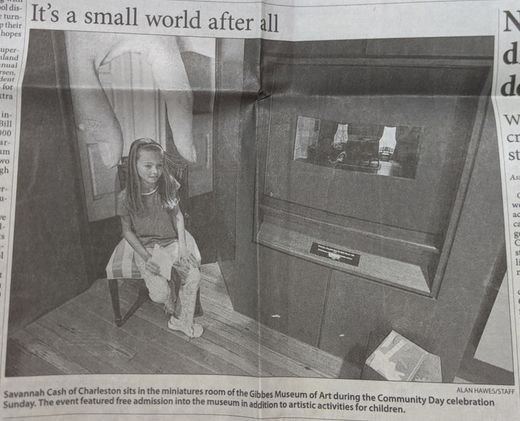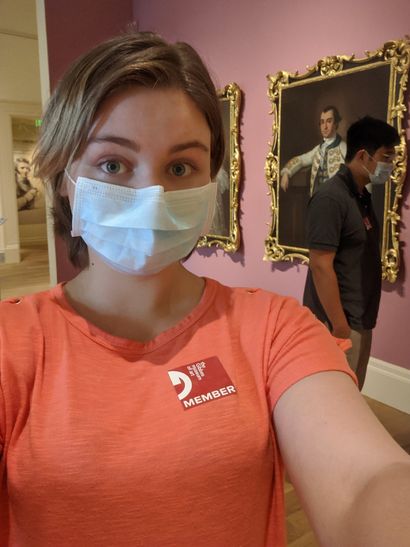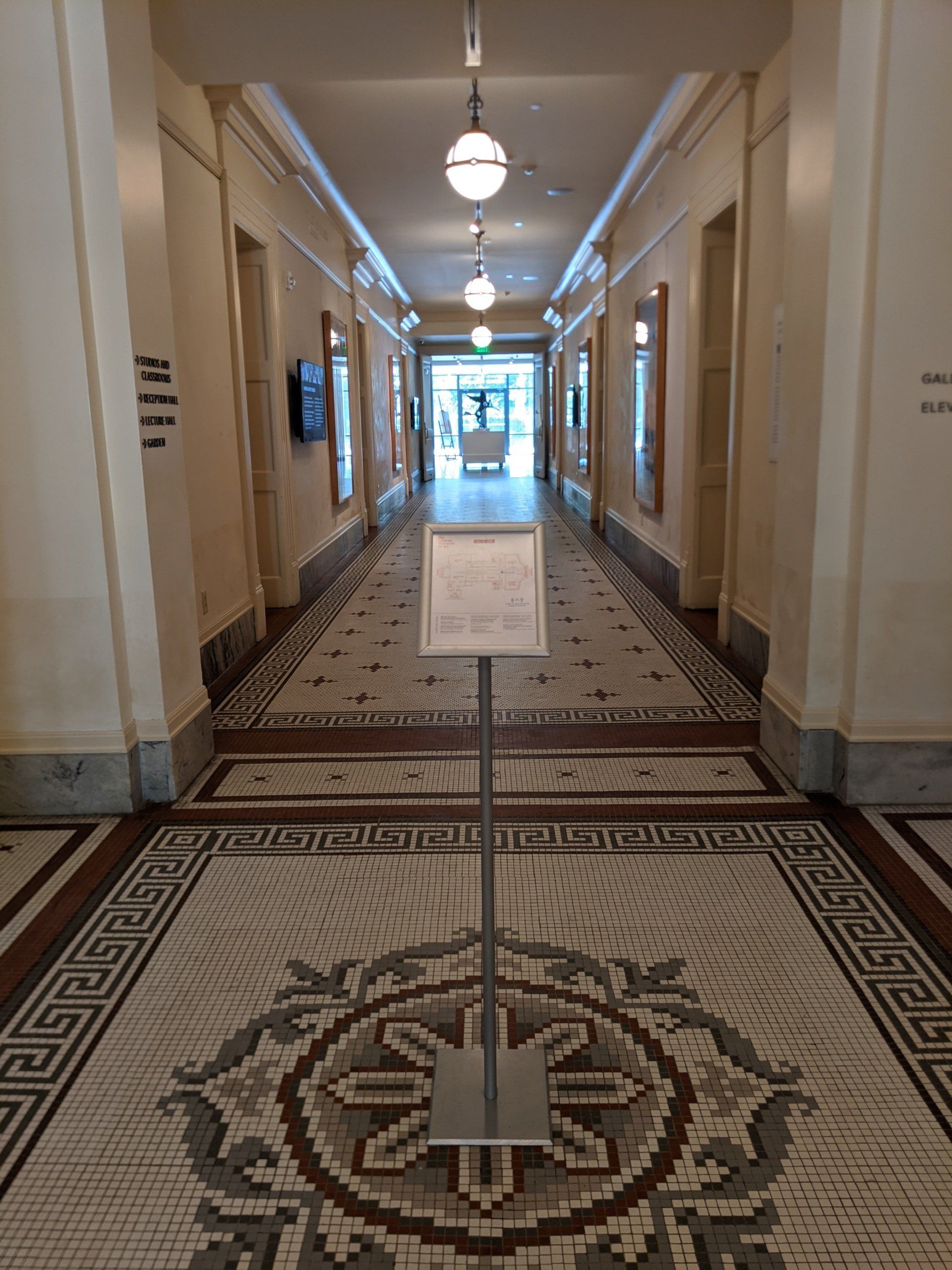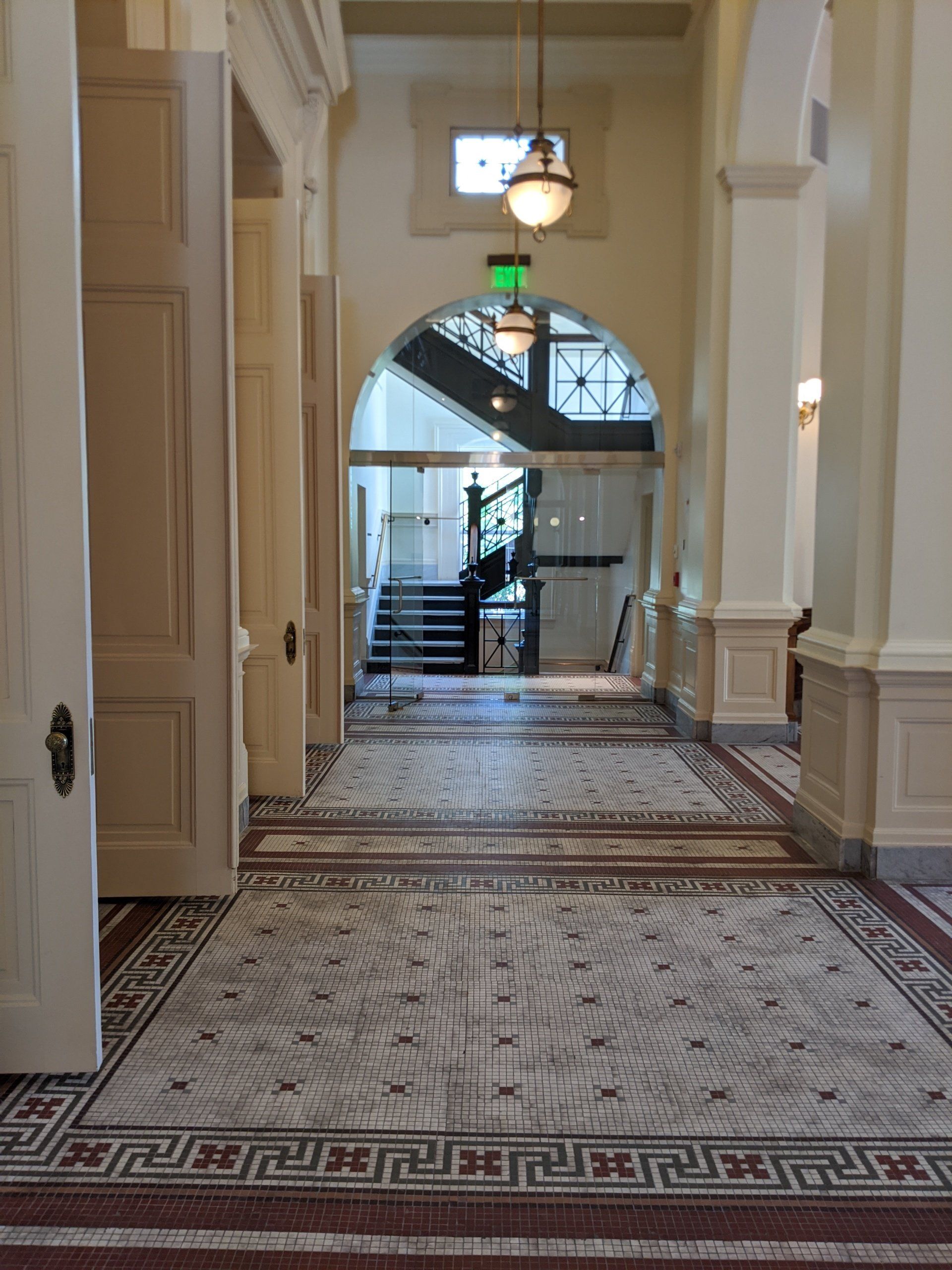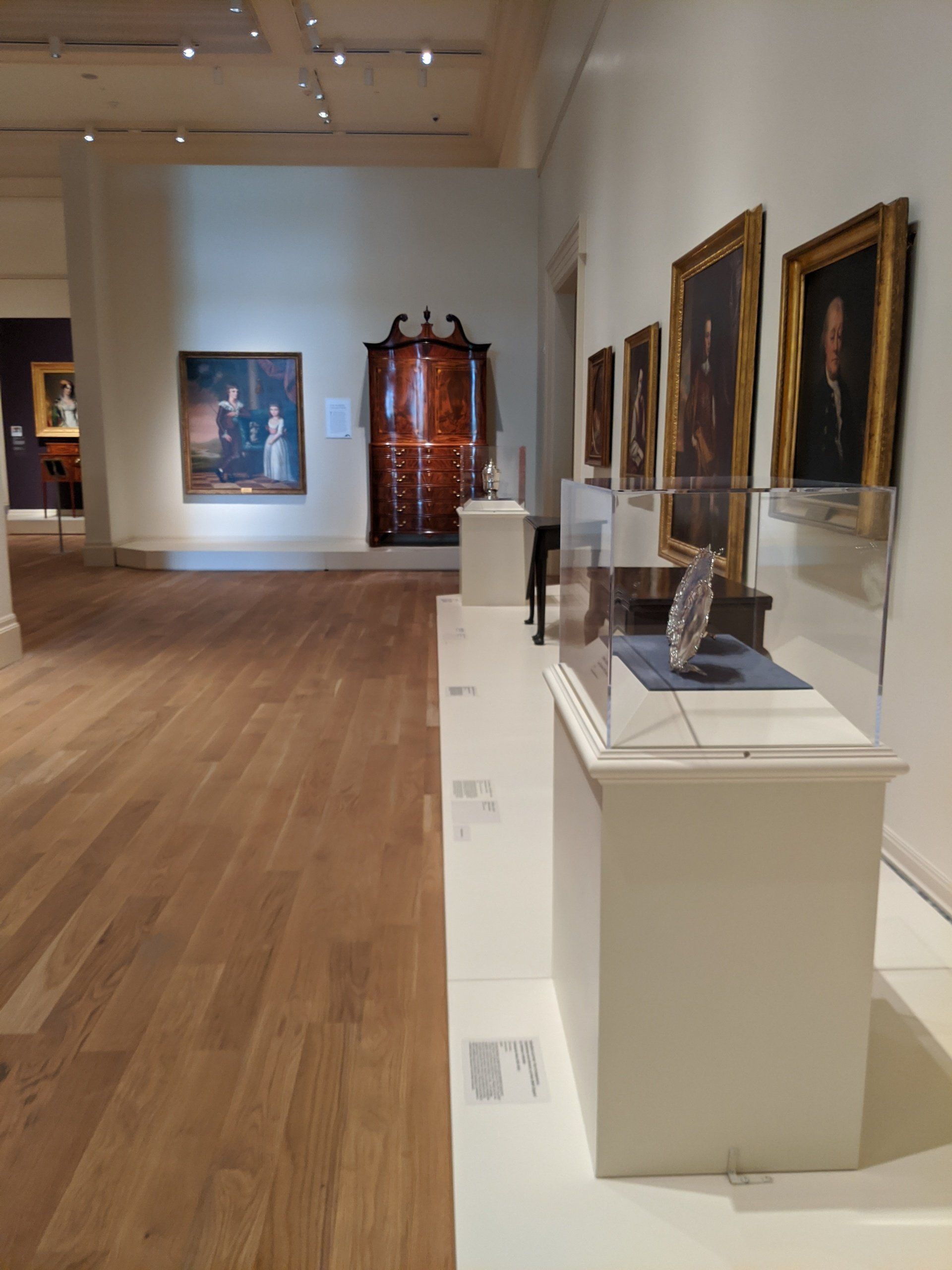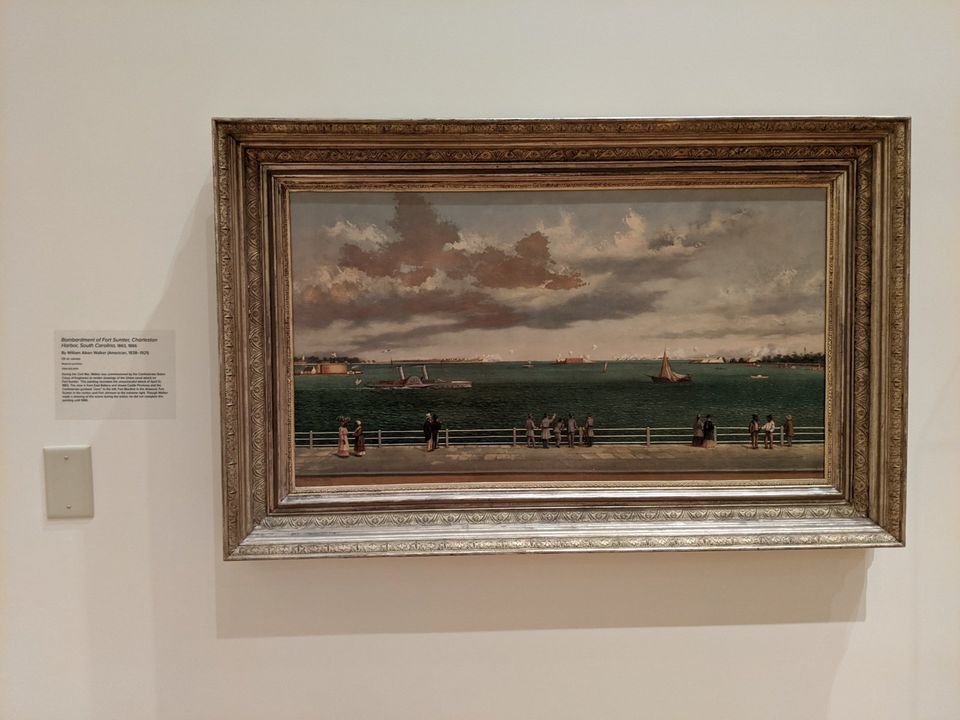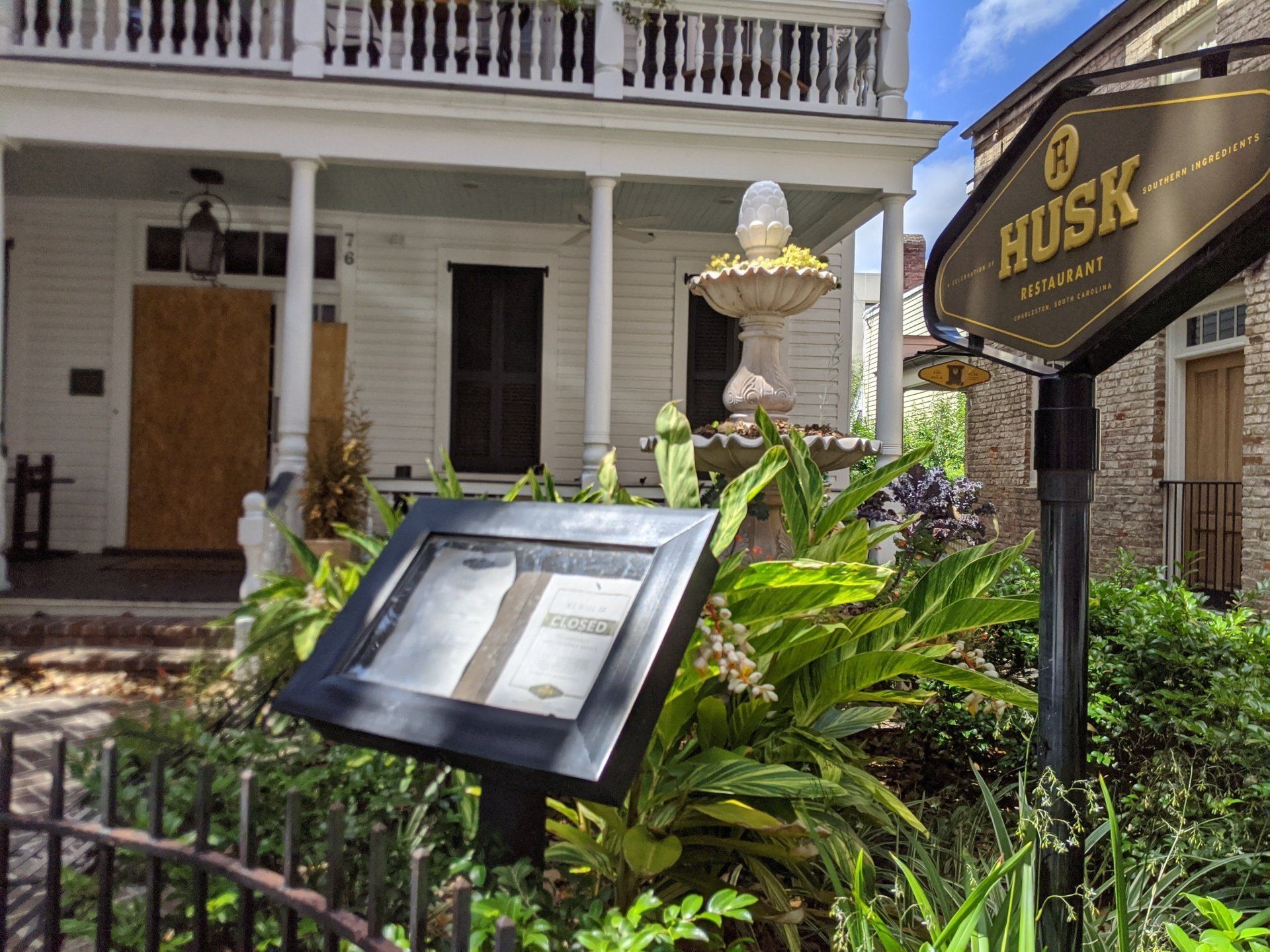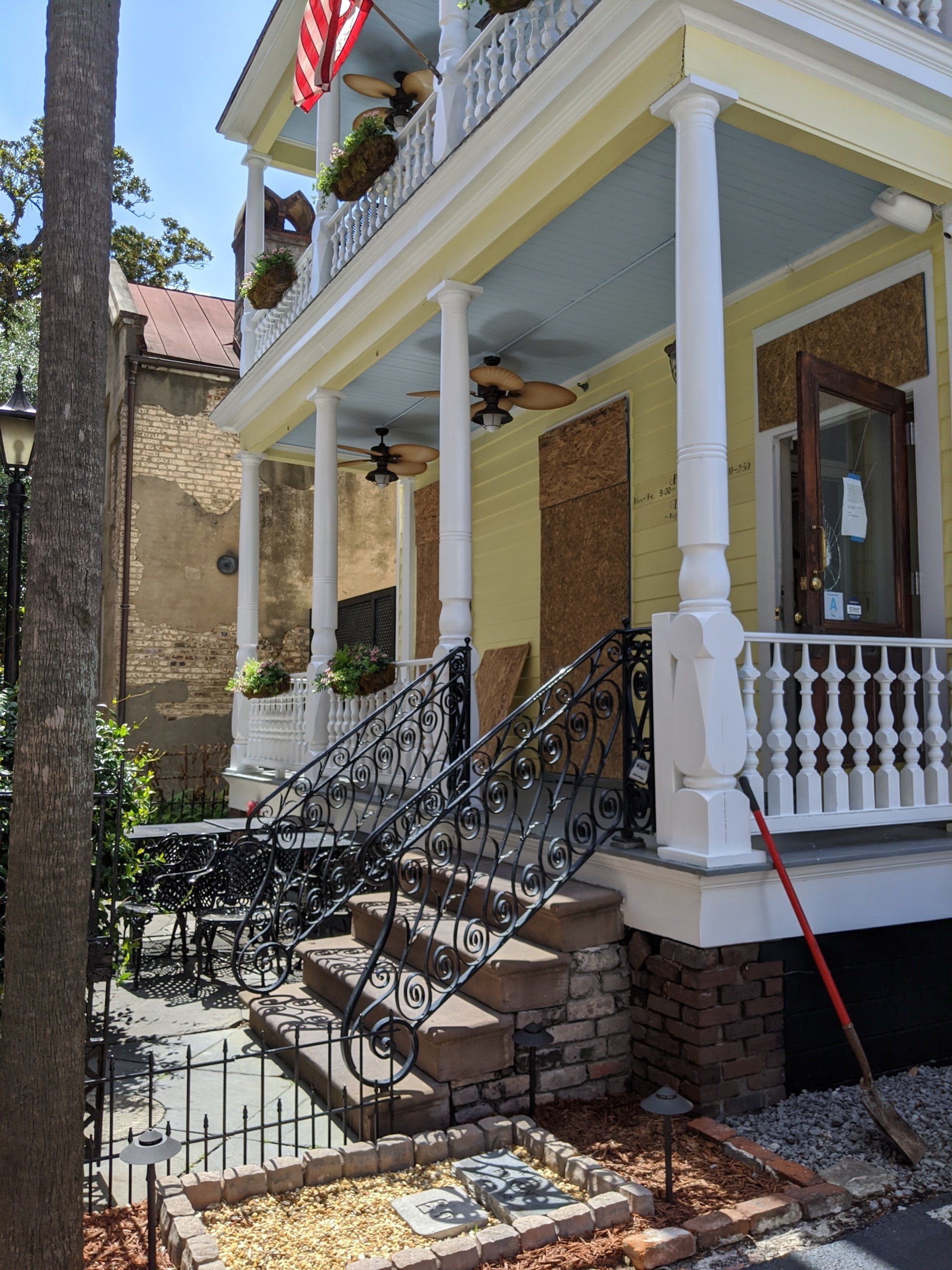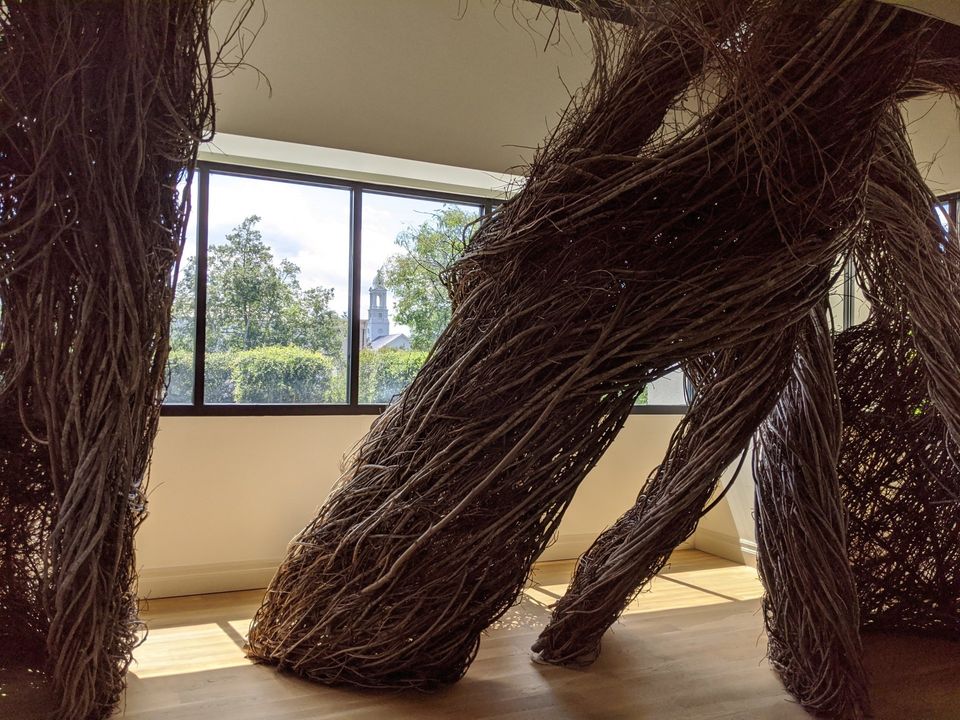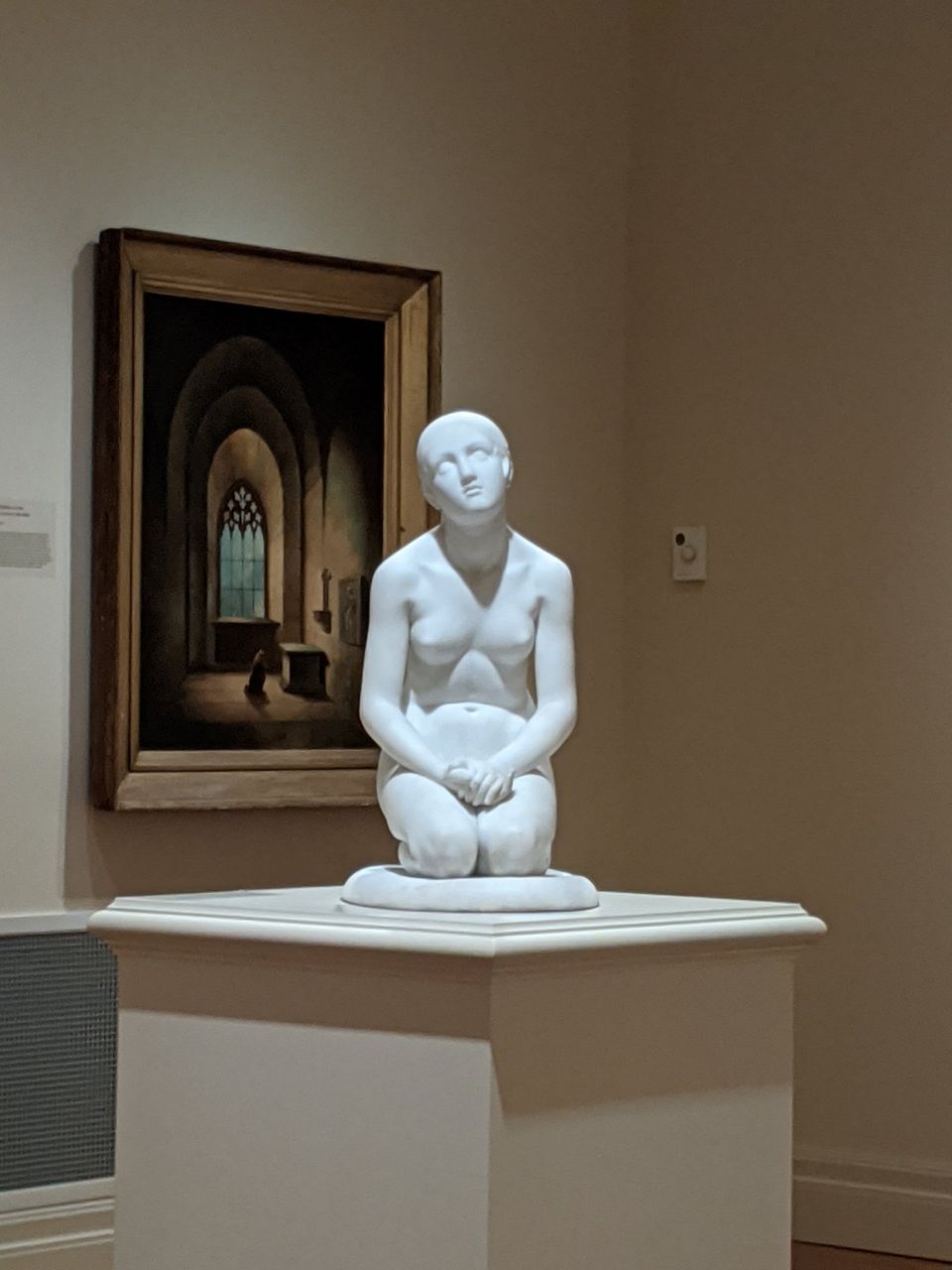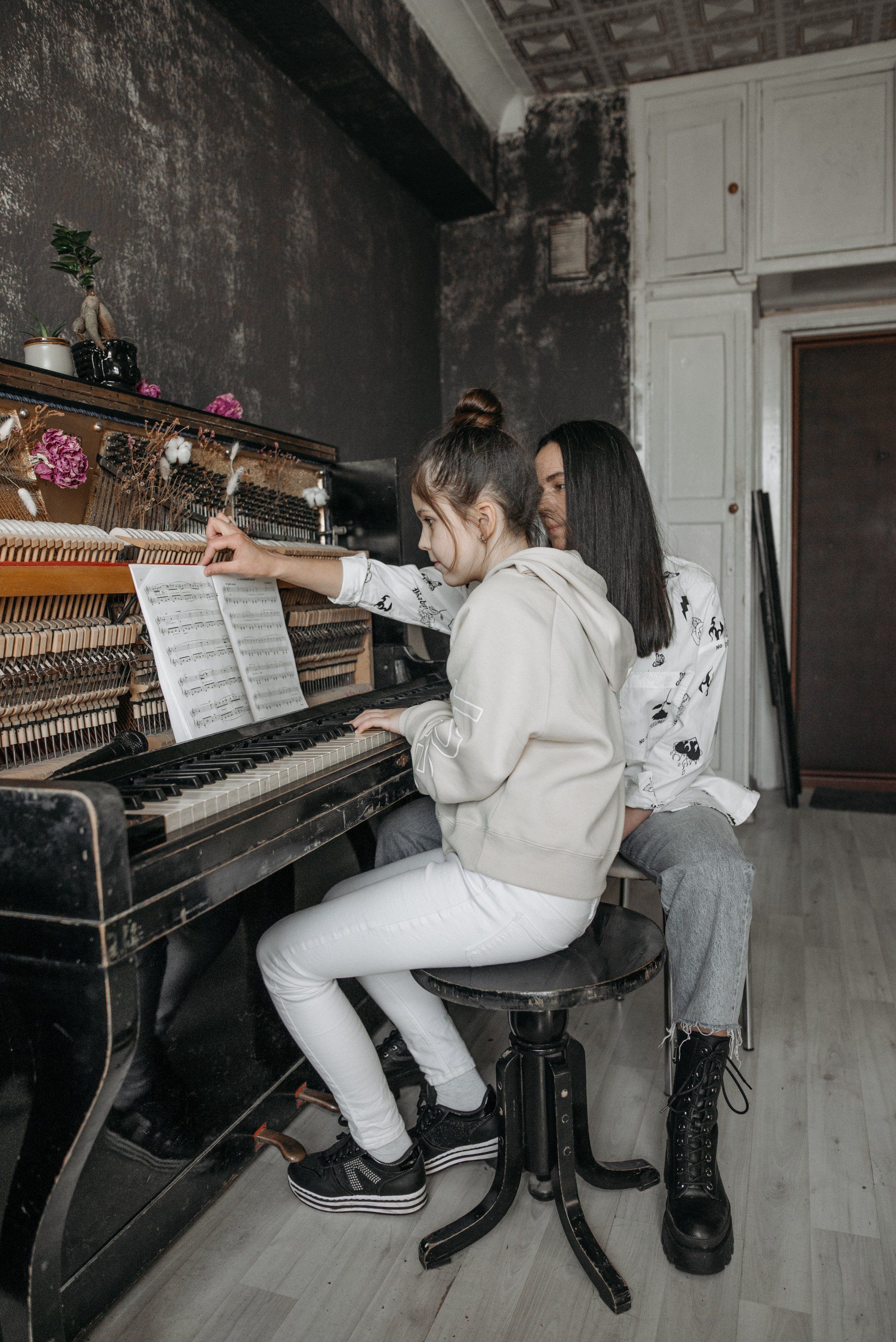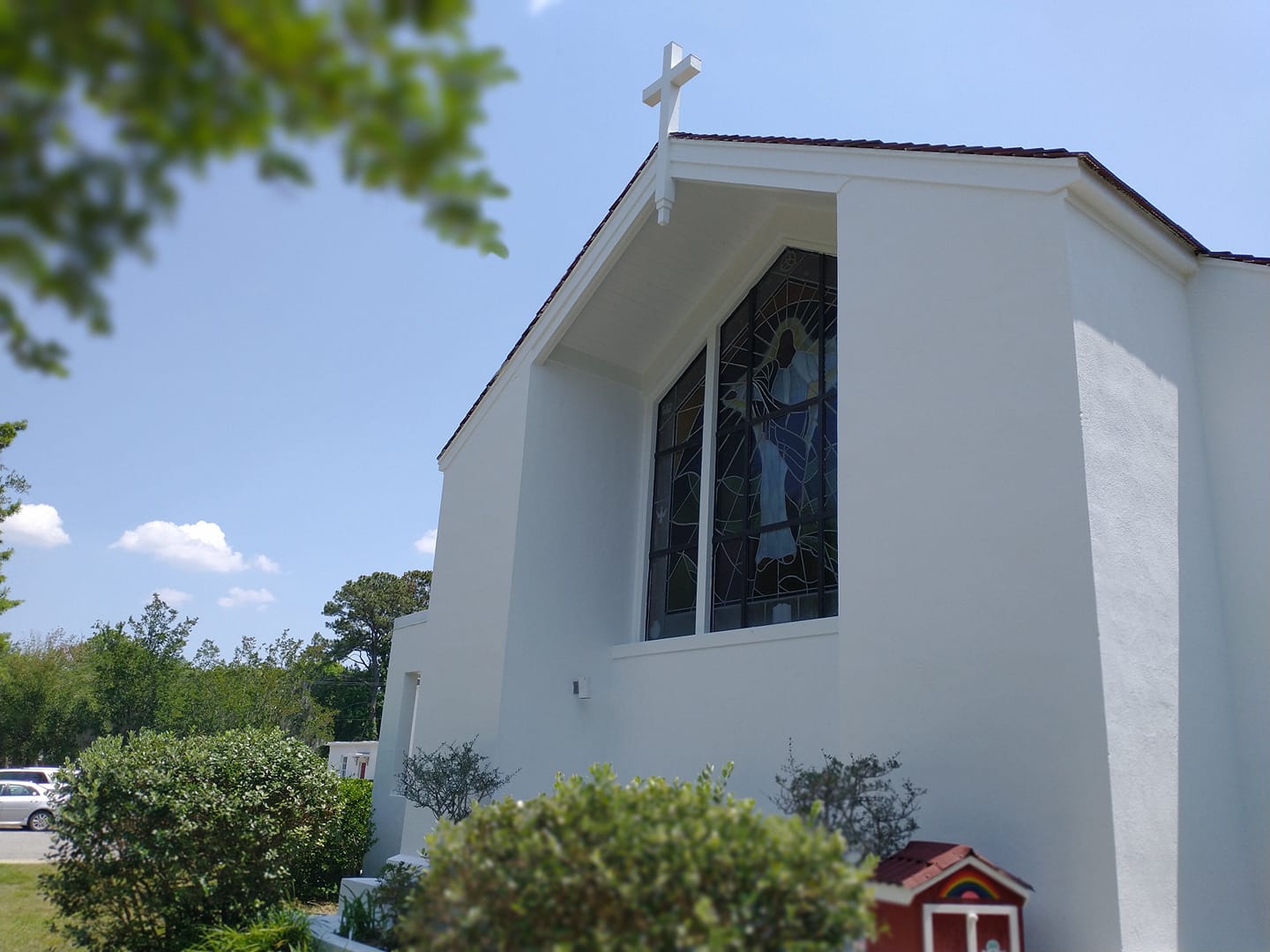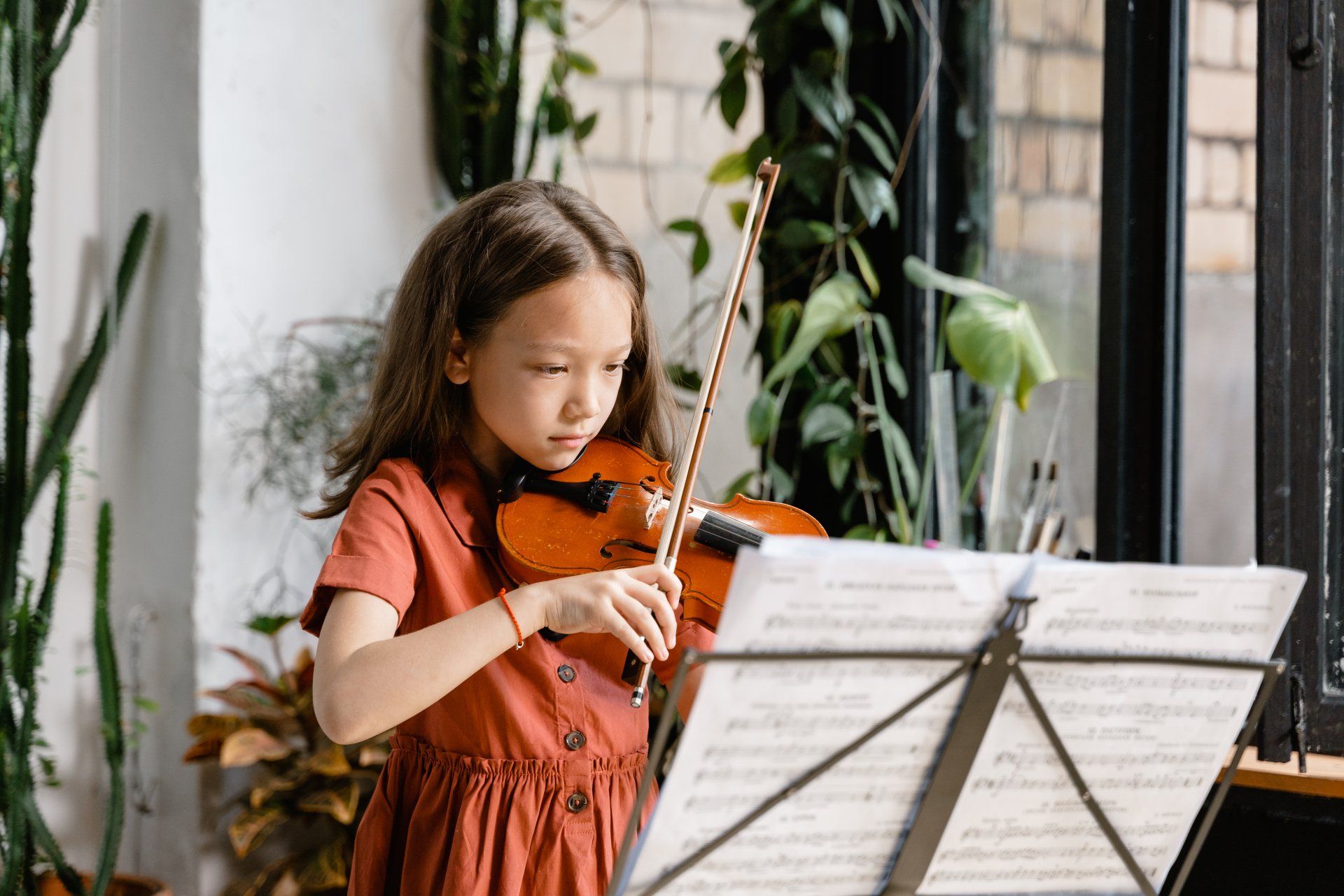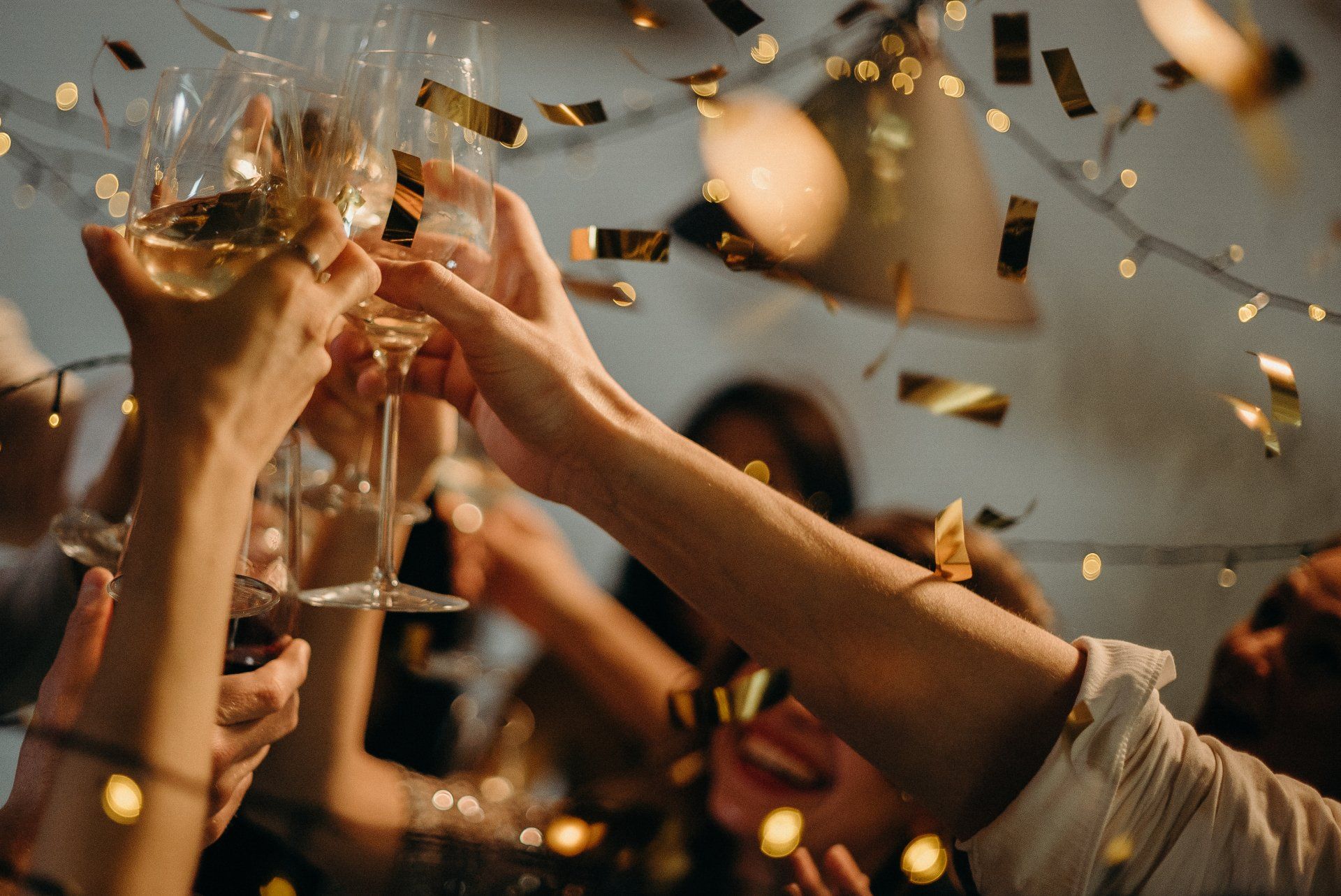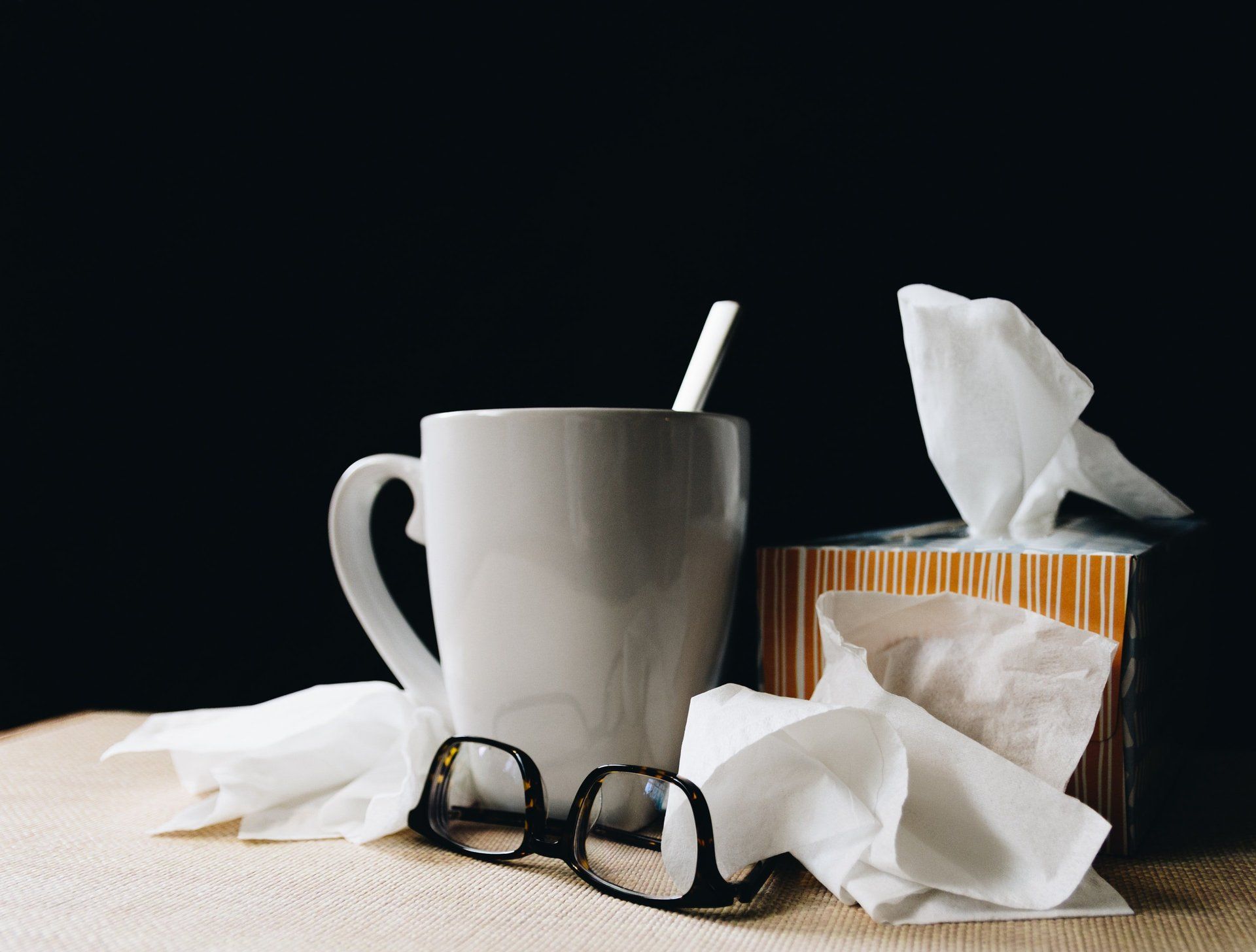Day One: The Gibbes Art Museum
Ava Cash • June 2, 2020
On the reopening of a fixture of our city, the gibbes museum of art.
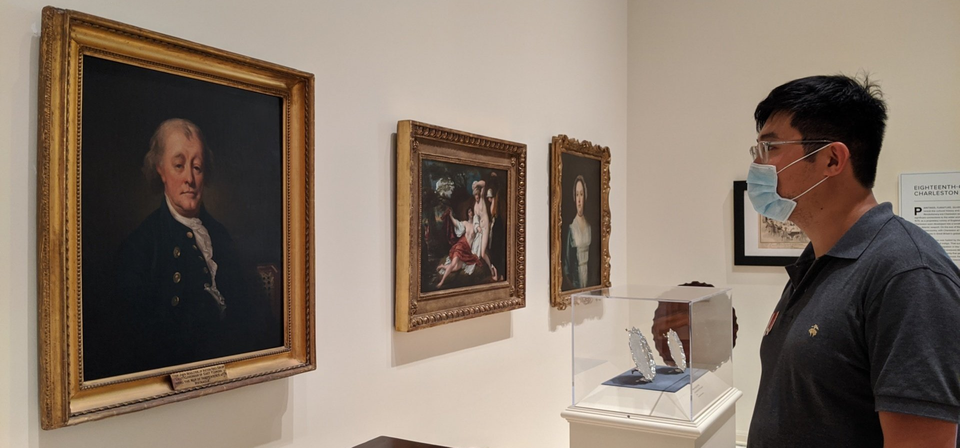
When I was little, the Gibbes museum had this miniatures exhibit. It was, and still is, my favorite thing I had ever seen in any museum, ever. Everything was tiny, like the entire exhibit was the excavation of the lilliputian society, a race of teeny little people who were hiding away in the shadows in the corners of the room, ready to jump back into their homes when we weren't looking. I loved this exhibit so much, I ended up having my picture taken in it, and it was shown on the Post and Courier:
The top of the page boasted a much catchier headline, concerning a murder-suicide, but my parents kept this cute picture of me all this time.
The miniatures exhibit has not existed in the Gibbes museum in years, almost two decades- but to me, that did not make the place any less magical. I loved attending art classes and camps there as a kid, winning a few competitions here and there, and returning to look at the art from time to time, to just revel in the beauty that has been so carefully curated by those fellows. When I came home from college, one of the first things I did was return to the Gibbes, trying to find inspiration in the paintings. I realized nothing that day, except that I really, really love art, and routine.
The Gibbes has been closed since March. I didn't think twice about it, as the world has been crumbling down around all of us, apocalypse after apocalypse casually occurring every other week. The pandemic looms over our heads still, but after so many months, the city of Charleston is finally opening up again.
As a violinist, all of my work has been cancelled. The majority of my income is gone. I'm okay, but I know a lot of people aren't. It's hard to prepare for the complete cancellation of your livelihood- so the opening of the Gibbes signifies not just a reopening of a museum, but a restart for all of the artists in Charleston who, like me, have been itching to share their art with the world again.
My boyfriend had never been to the Gibbes Museum, so he tagged along with me. We both wore our masks, stayed 6 feet away from everybody around us, and used hand sanitizer as frequently as suggested.
As it stands, the Museum requires all who enter to wear masks. This is not an unreasonable request, even if it were not for the pandemic. The Gibbes collection holds tens of thousands of works (Disclaimer: I do not know the exact number), only a fraction of which are on display, without barriers blocking the public. The vast majority of those works are locked away under secure, temperature and humidity controlled environments, for a reason; interacting with a painting, even with just your breath, ages it. There's a reason restorers wear masks, and it isn't fashion.
A plexi-glass barrier guards the helpful lady at the front desk, who is happy to explain the new state of the art (ha) at the museum. Today, even though the museum had been closed to the public for months, very few people actually came to the reopening; thus, their request that all patrons stay 6 feet apart did not seem relevant. While I was there, I only (briefly) saw two other people, both too engrossed in their own appreciation of the art to notice or come anywhere near me. I've never seen the Gibbes so empty. It is quite an interesting experience, seemingly having a museum all to yourself. And your date.
The museum guides you through a particular route, to keep the viewers flowing in the same direction, to better prevent collisions. This is helpful, but a little frustrating, given the looping nature of a few of the galleries. In apology, the museum offers plenty of hand sanitizer bottles readily available on nearly every bench in the place. On the one hand, this is a reminder of cleanliness; on the other, it is a suggestion not to sit down, and potentially spread your germs on the bench. Clever, but not insulting. Additionally, the hand sanitizer smells quite lovely.
The permanent collection is, as ever, a reminder of the beauty of Charleston, and its history, despite its faults. We saw some of the first bloodshed of the Revolutionary war. We were on the wrong side of the Confederate war. We have had our failures, we have had our victories, and we have had our terrors. We don't deny our past- we display the remnants of shameful times, things other cities with similar histories have destroyed, fully admitting our fault, and expressing the importance of remembering our history. Multiple art pieces dedicate themselves towards more recent tragedies, such as the events at the Emanuel AME Church, in 2015. As always, these historical pieces evoke a sense of belonging in our city, a sense of heartbreak for those wronged, and an understanding that our holy city can find the beauty in resolution, through art.
Sometimes, history isn't something you learn from. Sometimes, it's just a reflection of the present, a mirror that shows you something you already see, something you already know.
The placard beneath this painting begins, "Dr. John Moultrie complemented his medical practice by scientific study of Charleston's 1745 yellow fever epidemic."
My boyfriend is a physician himself, working directly with COVID-19 patients. I don't even know if he recognized how strange it was, seeing him, a doctor in the present dealing with an epidemic, staring into the eyes of a doctor from the past, also dealing with an epidemic, centuries ago. Yes, the guy looking at the painting is a Chinese guy who wears hipster glasses and owns an iPhone and loves his brother, and the guy in the painting is an elderly British man who lost a war and in doing so, betrayed his brother. It is still striking that two men in such similar situations could stand in the same room together, despite one being long dead.
That's the feeling you get at the Gibbes, now. All of these people, brought to us from the past, their lives may have been vastly different from ours, but really, they were the same as us. People of Charleston who, when it comes down to it, lived. Preserved on these historic walls are stories, glimpses into what was, what is, and what is to be, the truth of our city: We are here, and we are awesome. It is remarkable, and it is beautiful. It's the feeling of being a part of something greater than yourself- being a part of history, knowing that we are not alone in time.
Or at least, that's the feeling I get. My ever brilliant boyfriend (an MD, a doctor who saves lives, mind you) saw the table beneath the painting of his predecessor, and eloquently asked, "Hey, how much does this table cost?"
A painting that struck me as particularly telling of the current times is this one pictured above, one which I remember, but have never before understood. Bombardment of Fort Sumter depicts the battle of Fort Sumter, but from a distance. It shows us a few people standing at the edge of the harbor. Some are actively observing the battle, others chat amongst each other, some still are facing entirely the wrong direction, and a few more seem completely uninterested. In the past, I've thought, your world might be ending! People are trying to destroy your city, and you're going to just sit there, doing nothing? Is it worse to watch or to act like nothing is happening?
Now I get it.
Sure, we can't stand on the edge of the harbor to observe the effects of this virus on our city; instead, we have our sofas in front of our televisions, or our toilet seats as we browse the news on our phones, or our desk chairs as we scroll endlessly through memes on social media. Just like these people, we observe, and we choose how. Personally, I relate to those two women gossiping on the left. Watching directly only makes me worry more, and feel worse, while ignoring it completely feels even more wrong, like I'm invalidating the suffering of my people. Instead, I choose to stay just so in the know that I understand the current state of things, but not so in the know that I can quote statistics and cry about things that I can't change.
A virus outbreak is a far cry from a war, sure. But in remembering Fort Sumter, I remember the oddity that was the number of deaths as a result of the attack: zero. Meanwhile, this virus has affected nearly 600, at the time of this blog post, with 12 confirmed deaths. But just the same as that battle, where the mere civilians could do nothing, so many of us don't think we can do anything. This time, though, people are dying, and we feel powerless.
That is, you feel powerless, until you realize that this painting is not at all from the perspective of the people on the harbor. It is from further back, perhaps from a balcony of one of the houses facing the water. This painting shows the point of view of the artist, as he drew the battle, as it happened. The artist chose to focus not on the ships, the soldiers, and the fighting; instead, he focused his eye on the people below. The people who, in his eye, deserved to be preserved, who really mattered. He knew that history would focus on the battle, but he decided, during said battle, to focus on the people.
Standing there, looking at that painting, looking at this meta observation of the effects and non effects of tragedy on our lives... it's a weird thing to do. It's even weirder to realize that his contribution to the historical record has survived, despite recording that life goes on,
rather than recording the actual battle.
And life goes on, and you move on to the next painting.
A private collection I personally haven't seen before, depicting numerous scenes of British men hunting on horses, with their dogs, wearing red jackets, top hats, and white, billowy pants, specifically from the late 19th century, sits in the first gallery you see upon entry. Very few paintings in this collection deviate from this very, very specific theme, one of which is a depiction of three dogs, smiling up at you, not pictured here. The painting pictured above, though, felt very appropriate to share: A Day in June.
Sitting in a big room, surrounded by painstaking efforts by people long dead to preserve scenes they thought deserved preservation, efforts that paid off by the mere fact of their presence right now, it should feel overwhelming. Shouldn't it? It should feel like you have the eyes of so many hard working artists staring at you, judging you as you judge them, reading your mind, to know if you understand their art. It doesn't, though. It doesn't feel overwhelming in that crushing sense, in the slightest.
In art museums, of nearly any kind, I feel small. I feel cramped, like I'm surrounded by those artists, by their subjects, by everyone whose lives have been remotely touched by that painting. I feel like the entire room is stuffed with life, even if everybody whose faces adorn those canvasses has been dead longer than living memory. It's not a feeling of claustrophobia, more a feel of comfort, like the warmth of a family gathering in a slightly too small dining room, in a house that you've lived in forever.
A Day in June
shows us just that, a day in June. The mid-afternoon light shines on some horses and cattle, as they graze and lounge about, most finding comfort in the shade. This particular lazy day in June was a day in the June of 1860, a little over a century and a half ago. That sun still shines, though, and the grass outside is still green, and this painting still gives whoever sees it a little moment of relief.
We parked in the garage on Queen. On our walk back to the car, I became distinctly aware of the quiet of the roads; the only sounds I could really hear were construction vehicles, and police. It was not quiet, in the literal sense of the word, but the usual laughter and music and voices of the streets downtown were gone. We turned the corner, onto Queen, and every single building we passed bore boarded up windows and doors. Some purposefully held their doors open in defiance, duct tape alone holding in place their fragile bones, while others posted apologetic signs, regretfully informing passers by of their temporary closure.
The city was just starting to open up again, and we have hit a setback. Or rather, that setback hit us. It hit us hard.
Did you know that from nearly every window, every corner of every block, in our little peninsula, you can see a church's steeple?
You don't need to believe in God to understand the importance of these monuments to faith: they are a testament to our will, to the fact that Charleston is strong, and we'll push through anything thrown our way. Despite the coronavirus, despite the economy's dip, despite the loss of jobs, despite the closures, despite the riots, despite the looters, despite the desperation, despite the fear, despite everything, we will keep going. Looking through the installation piece, Betwixt and Between,
one can see a church steeple peeking out from beyond the courtyard. It's not a part of the piece, but it's a part of the scene. It's just that reminder, that Charleston has faith in God, but more importantly, faith in ourselves.
That, truly, is the purpose of art. To inspire: and for me, visiting the Gibbes after so long without it, I was inspired to have faith. I tell my students all the time that inspiration is fickle. It cannot be relied upon, as your sole motivator. One must develop a healthy work ethic, in order to truly advance and improve as a musician, as a person. And that still holds true- but one must also recognize the importance of inspiration.
As I stated near the beginning of this article, the arts community has been shut down, for quite a while. Art museums have been closed, sure, but concerts were also cancelled, plays were shut down, and our voices were silenced, except on the internet, a limited media. In a time where your work ethic is driven solely by you, not by a concert, not an audition, not a rehearsal, not even a real live lesson, inspiration comes in handy. Our work ethic needs a fuel, and most of that time, the fuel is our accomplishments, and our goals for the future. Right now, lacking both, we must be driven by something else.
For many, we are driven by a sense of community, as we come together to support one another in this difficult time. For others still, we are driven by spite, refusing to let the current state of the world get in the way of our passions. But for some, I don't know how many, we need a spark of inspiration, a little reminder of the beauty of our art.
Go visit the Gibbes. They're being very conscious of themselves, and they could use your support. And I'm sure a little bit of beauty might help us all through these times.
http://www.gibbesmuseum.org/become-a-member/
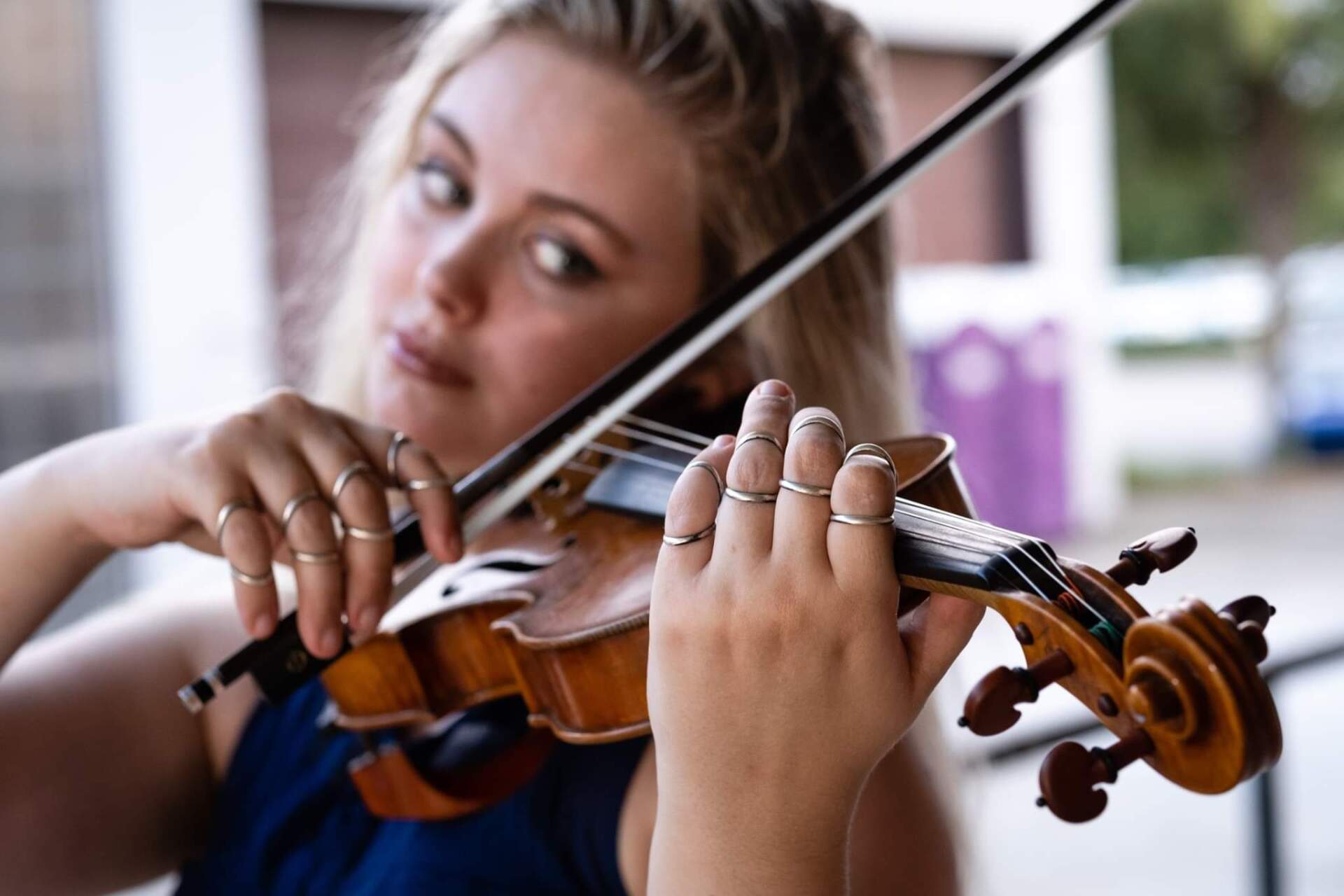
I did not realize that I was double jointed (otherwise known as 'hypermobility') until it began to adversely affect my violin playing in a noticeable- and legitimately painful- manner. It was my last year in college. To be specific, every time I curved or straightened my pinkies, they would "pop", and cause immense pain, and inflammation, that made my hands feel like they were on fire. By then, it seemed to be too late for me to fix habits in my playing that were causing me pain, so I looked for external means of stopping the pain. I ended up wearing these little splints on my pinkies, called 'Oval 8's' (pictured below), as an occupational therapist concluded that I was suffering from trigger finger in my pinkies. This configuration forced my pinkies to remain straight, effectively forcing me to learn to play without pinkies. Unfortunately, this kept my pinkies in a perpetual state of hyperextension, which was incredibly painful, and therefore quite pointless.. As my other six fingers began to pick up the slack, I started developing the same pain in my joints on those fingers, and the therapist declared that I must have trigger finger in every single finger on both hands.
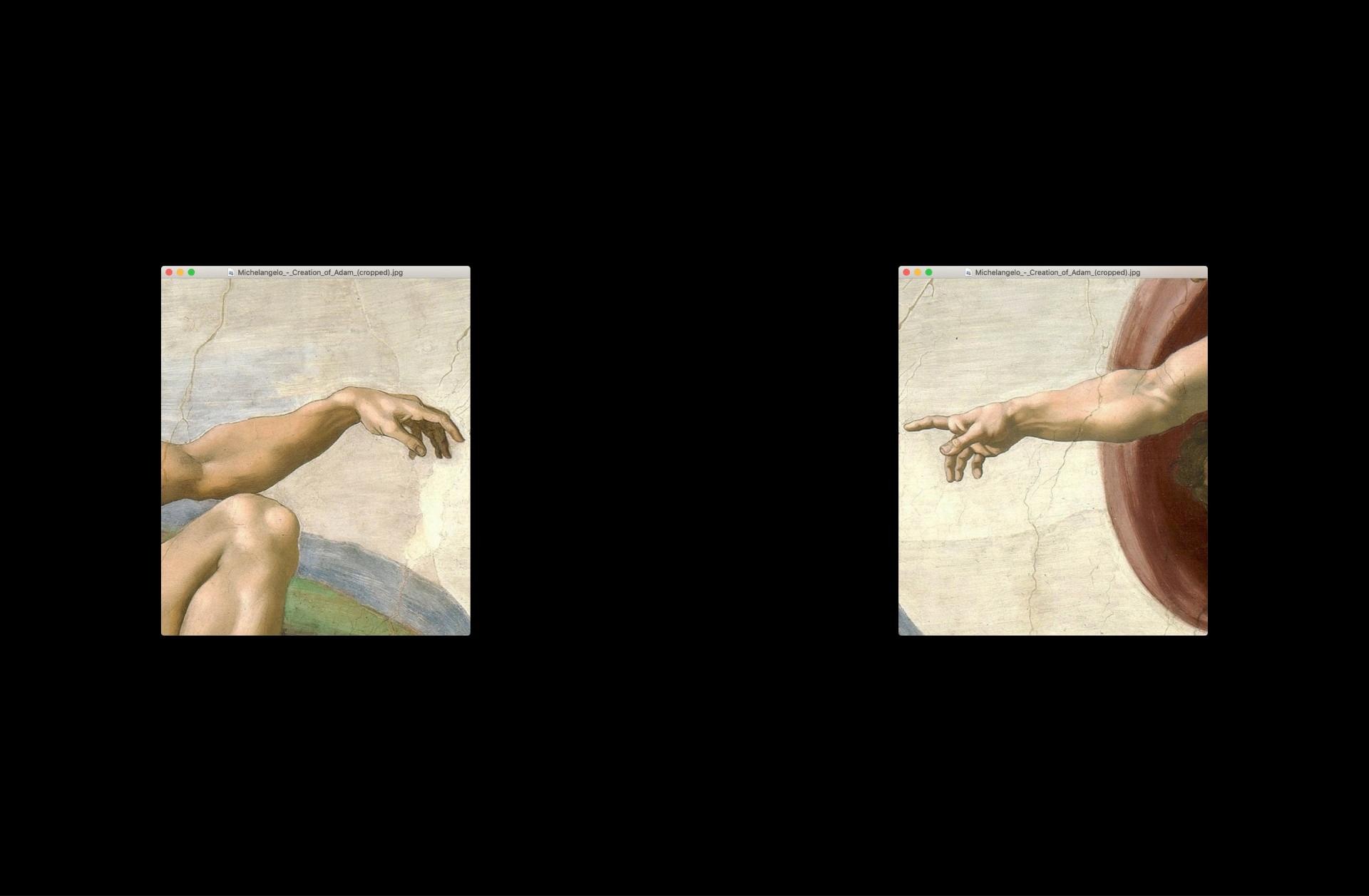
The Music Academy of the Two Rivers plans to reopen on June 1, 2020. Lessons should resume at that time, barring further announcements. We also plan to offer a new scholarship upon reopening, details below. At MATR, our mission is to bring happiness, peace, and achievement to the lives of the children of Charleston, through music. At this time, due to the influence of COVID-19 on all of our lives, we recognize that more than ever, people- especially children, who may not understand the full scope of the virus’s consequences- are in need of these things. Normally, our scholarship program is limited to applications from good samaritans who are aware of children in need; however, given the coronavirus, we are offering a special scholarship to which anyone can apply. This scholarship will give up to 10 children three full months (June, July, and August 2020) of free violin lessons, and instrument rentals. Any child under the age of 8 whose life was affected by the coronavirus is eligible to apply. The application asks for the child’s information, the parent’s information, and a 500-1,000 word statement detailing how the coronavirus has affected the child and their family’s lives. The deadline for application is May 22, 2020, at midnight. If your family suffered a loss, or even just the heavy emotional turmoil of a loved one in the hospital; if a member of your family is an essential worker or healthcare worker, who has been distanced from the rest of the family due to their job; if your family’s provider has lost their job, severely impacting your child’s quality of life; if your child themself was diagnosed with the virus; or if the virus has impacted your child and your family’s life in any other way, please apply. There are no strings attached; after these three months are over, there are no further obligations to the studio, and the child can drop out at any time with no penalties during the duration of the scholarship. We just want to help however we can, while we all heal. If you are interested in applying, the application is located here (CLICK HERE). With love, Savannah Cash UPDATE: 5/6 I thought I'd add in an FAQ, to address some of the questions that I've received. If you have any questions, please contact us through Facebook, email, or just give us a call. If only 10 people (or fewer) apply, will all of them get the scholarship? No. We will only grant the scholarship to those that we select from the applicants, and our limit is 10. How many lessons and instruments does this scholarship give? The scholarship will allow for unlimited lessons throughout June, July, and August 2020. Each student will begin with 30 minute lessons, once a week; if the teacher deems that the student can move faster, we will switch to 1 hour lessons, once a week. If the teacher deems that the student can move even faster, we can add in additional lessons as needed. As for instruments, the student will be given a violin their size when they advance to the actual instrument; the student and parent will still be responsible for the safety and care of the instrument. What is the monetary value of the scholarship? If the student does the minimum and sticks with 30 minute lessons once a week, the monetary value is approximately $400. If the student works hard, and the teacher moves them to hour long lessons twice a week or more, the value is approximately $1,400+. Essentially, this is an opportunity to really take advantage! Can I still apply if my child is already taking lessons with another teacher? We have a strict policy against poaching students from other studios. However, if you are already taking lessons with another teacher, we will take your child strictly in a tutoring position, maintaining an open line of communication with your primary teacher, so as not to overstep boundaries. What if we're not planning on continuing lessons after the scholarship ends? That's fine. There are no strings attached here- if you decide after 3 months not to continue, then you can quit. If you decide after 3 months to keep going, then we'd be happy to have you! It's up to you. This scholarship is an opportunity to bring your child happiness, peace, and achievement. It's meant to be for the benefit of the child; if it's not for you, that's fine, but we encourage you to continue if your child derives any of these benefits from music. How are you going to keep lessons safe while COVID-19 is still going on? All students and their parents will be encouraged, but not required, to wear masks. Only one parent/guardian is allowed to attend with the student, no siblings will be allowed to attend, unfortunately. Before and after each lesson, students and parents will be required to wash their hands. The teacher will guide the parent to assist the student, so there will be no physical contact. Any other reasonable accommodations requested will be considered. What's the catch? There is no catch. If you get the scholarship, you get 3 months of lessons, with no strings attached. If you want to quit at any time, you can. If you get to the end and decide to continue somewhere else, we'd be happy to give you a recommendation. If you decide at the end that you'd like to keep taking lessons with us, we'll happily welcome you in the studio. Can current students apply? And what about past students? Yes to all. Will the scholarship cover travel expenses? No. The scholarship will only cover the cost of lessons, and the instrument loaned from the studio. The parent and child will be responsible for their own travel, and any other non-lesson or instrument costs. That being said, there is no restriction geographically for this scholarship; as long as you are willing to travel the distance, you are eligible to apply. If I miss a lesson under the scholarship, can I get a makeup lesson? As long as the scholarship term has not ended (August 31, 2020), and 48 hours notice is given before the cancelled lesson, the teacher will find a time to make up the lesson. If the scholarship term has ended, or adequate notice is not given, the lesson will not be made up. I have a vacation (or some other commitment) planned during the scholarship term, can I get it extended into September, or shifted into the school year? The scholarship term will remain fixed, June/July/August. This scholarship is meant to last the summer term, so that your child has more time to dedicate towards learning a new skill- it is much easier to start the violin outside of the school year, than during the school year.

WHO? This class is for parents and children up to 6 years old. Neither the kids nor parents need any prior musical experience- and you definitely don't need to bring an instrument! All materials will be provided by the instructor, Miss Cash, a violinist studying at the College of Charleston's in their Artist Certificate post graduate program, and the violin teacher of the Music Academy of the Two Rivers. WHAT? These classes will be 30 minutes to an hour, depending on attendance. Every class will be unique, and all classes will be drop in friendly. You can attend as many or as few as you'd like, at any point! The point of the classes is to teach the little ones everything they need to know before starting to play the violin in formal lessons. They'll learn how to hold the instrument, both the violin and the bow, they'll learn basic rhythms, form, and composition, among other essential skills. Look at this class as an optional prerequisite to taking private lessons- a headstart if your child wants to learn to play! WHEN? Starting November 2, these classes will occur every Saturday, at 1 PM! If a class is cancelled, this will be announced through the library, and on our Facebook page. WHERE? The West Ashley Public Library, located in South Windermere. The address is 45 Windermere Blvd, and you can find it at the back of the shopping center. I highly recommend grabbing lunch at the Three Little Birds first, before you head to class- it's nearly right next door! WHY? Miss Cash, the teacher, is trying to open up the studio to younger students whose parents may be hesitant to start formal lessons. This is an opportunity for parents and children to "audition" the violin, to see if it is right for them. If it isn't, no harm done, no money lost- and if it is, any students who want to start formal lessons with Miss Cash can do so with a special discount!
